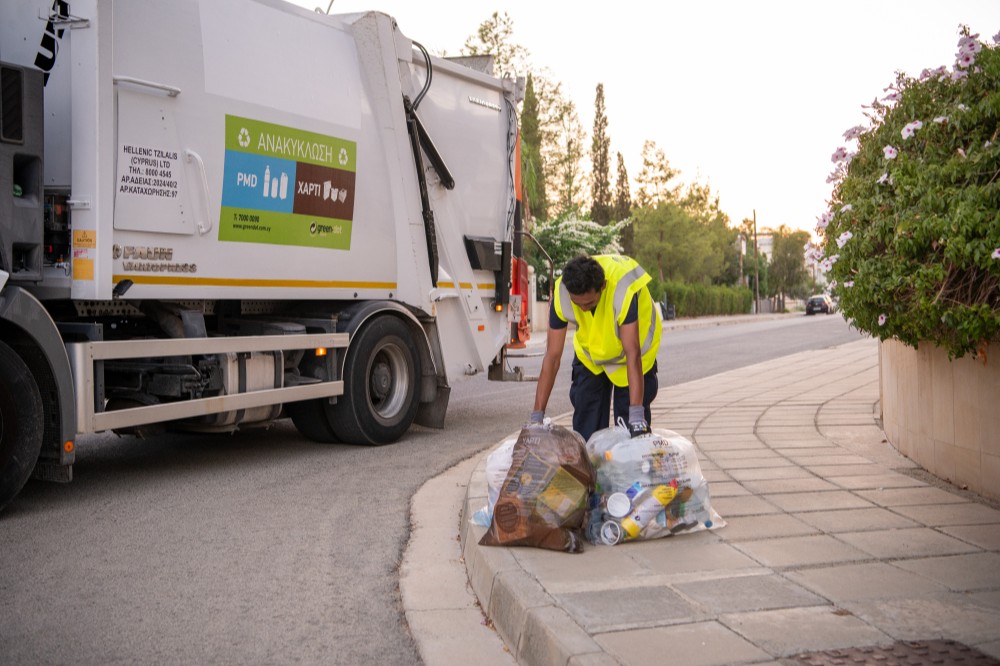You may have heard it countless times, but as is well known, "repetition is the mother of learning": recycling is one of the most essential and effective daily habits we can adopt to protect the environment.
However, it is not enough to put "bells" in special bags or glass recycling bins anything you think is recycled. This is because proper recycling does not start when the recyclable packaging arrives at the sorting center, but starts from our home, and specifically from the separation of the materials we make! This process is called sorting at the source, and it is proven to be the best recycling method.
Obviously, we have all made mistakes and the usual reason is incomplete or incorrect information about the right separation. These mistakes, however, can have much more serious consequences than we realize.

A little carelessness can nullify a great effort
Let's start with a simple example: we ate the pizza! So out of habit, you take the cardboard box of pizza and put it in the special paper bag. What did you forget to do? Remove the paper base from the pizza leftovers. It's not your fault, you probably didn't know that a "dirty" packaging is enough to affect the entire contents of the bag.
This carelessness may seem marginally insignificant, but the truth is that even a package that has not been cleaned of debris can cause problems in the subsequent stages of processing all the materials you have placed in the same bag. Not to mention that for hygiene reasons (especially smells), kittens will attack her to get the food, so she needs to be careful. The result: it may all end up in the common waste and your effort may unfortunately be wasted!

Incorrect separation costs time, energy, and resources
Where does the packaging you recycle go? At the sorting centers! And you might think of them as huge, completely automated facilities, but the reality is that they work with a combination of mechanical-manual sorting methods.
As far as improperly separated materials arriving there are concerned, these in particular require additional handling and human labor, resulting in increased operating costs and reduced system efficiency. In addition, some materials that have been soiled, as mentioned above, from the first household sorting reduce the quality of recycling. In short, in the sorting centers they cannot do "magic" so that they become suitable again to proceed with the processing, which is the next stage of the recycling process.
The "usual suspects" of incorrect segregation of packages
Several times, out of excessive zeal, ignorance or a combination of both, you place in special bags or glass recycling bins (bells), packaging or objects that are not recycled, considering them "innocent". In reality, however, they cause problems in the later stages of the process. Here are the most typical examples:
- Paper packaging in the transparent PMD bags: Paper packaging should be placed in the brown paper bags and not in the transparent bags of PMD.
- Polystyrene: Do not place polystyrene in the special recycling bags.
- Kitchen paper , toilet paper or baby wipes and paper plates: Do not place kitchen paper, toilet paper or baby wipes and paper plates with the paper packaging you want to recycle.
- Toys: Do not place any toys in recycling. These should be transferred to the Green Points.
- Packaging with food or liquid residues: They should be emptied and rinsed for hygiene purposes but also for better results in recycling.
All of the above materials, instead of contributing, make sorting difficult and delay the recycling of really recoverable waste.

Small Moves That Make a Difference
The solution to the proper household separation of recyclable packaging is not, fortunately, nuclear physics. It just takes a little more attention and follow the steps below:
- Rinse the packages (those that need rinsing) before throwing them in the bin or putting them in the special bag.
- We fold the cardboard boxes to save space.
- We close the special bags tightly to protect the materials from the rain.
What happens when we recycle well?
Recycling is not just an obligation, but a choice we make every day to ensure a sustainable planet. Because any properly separated material is a small but substantial victory for the environment.
And Green Dot Cyprus, the first collective packaging waste recycling system in the country, is at the forefront of this effort, as it has built a door-to-door collection network that currently covers about 90% of the population of Cyprus and results in the recycling of up to 80,000 tons of packaging materials annually.
Because, according to Green Dot, when "we recycle well, we live better"! And you can find out today about all the rules of good recycling and the actions of the organization on its official website, as well as on its channels on YouTube, Instagram and Facebook, and become part of this very valuable effort.
